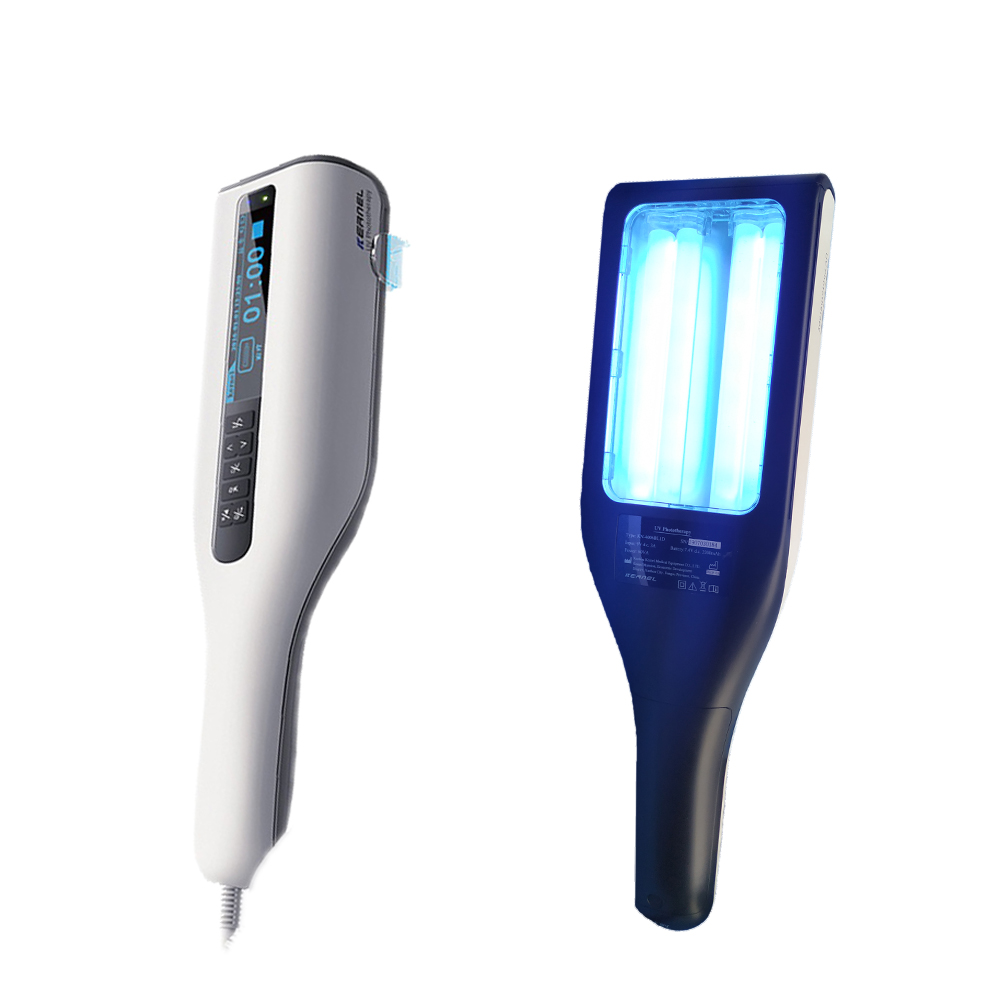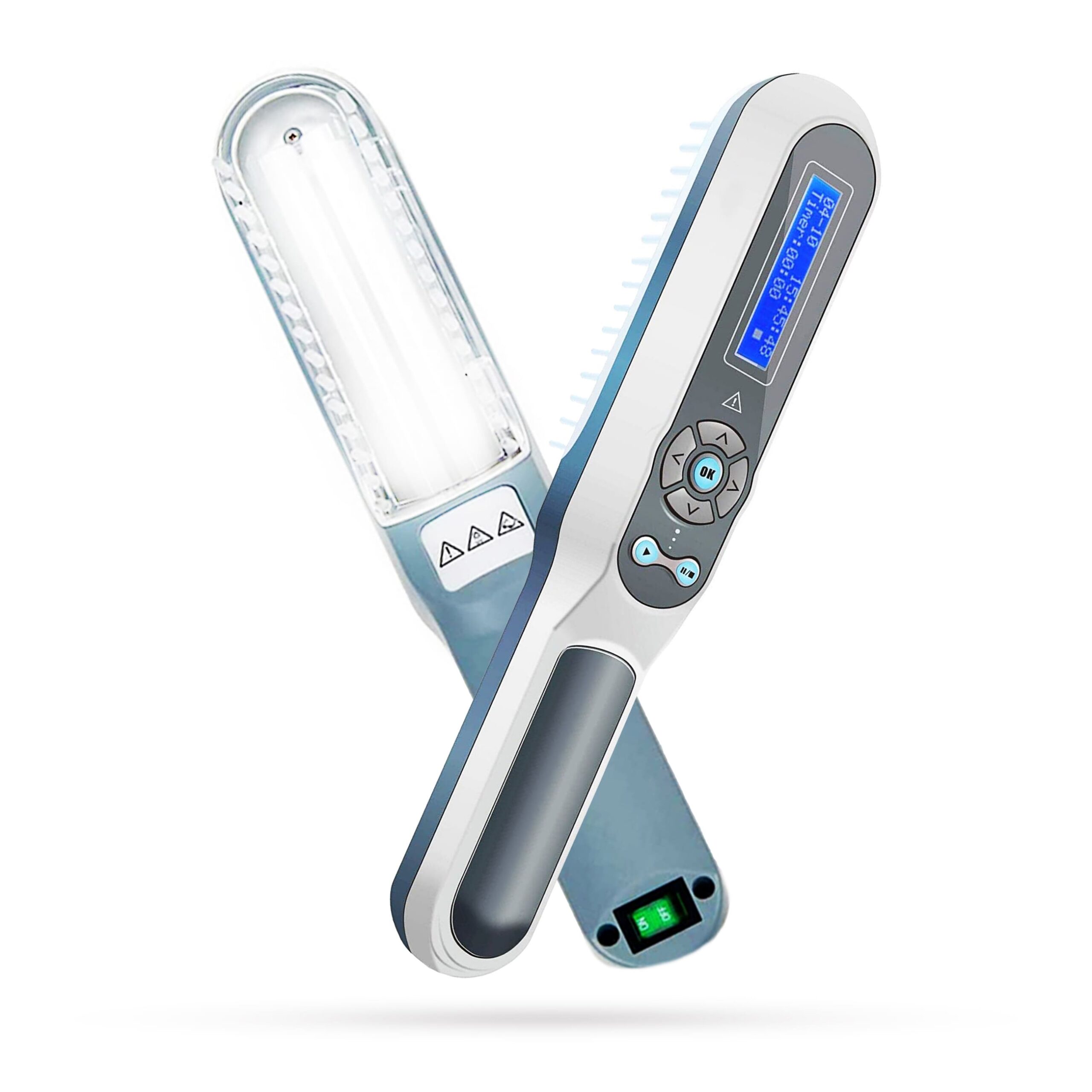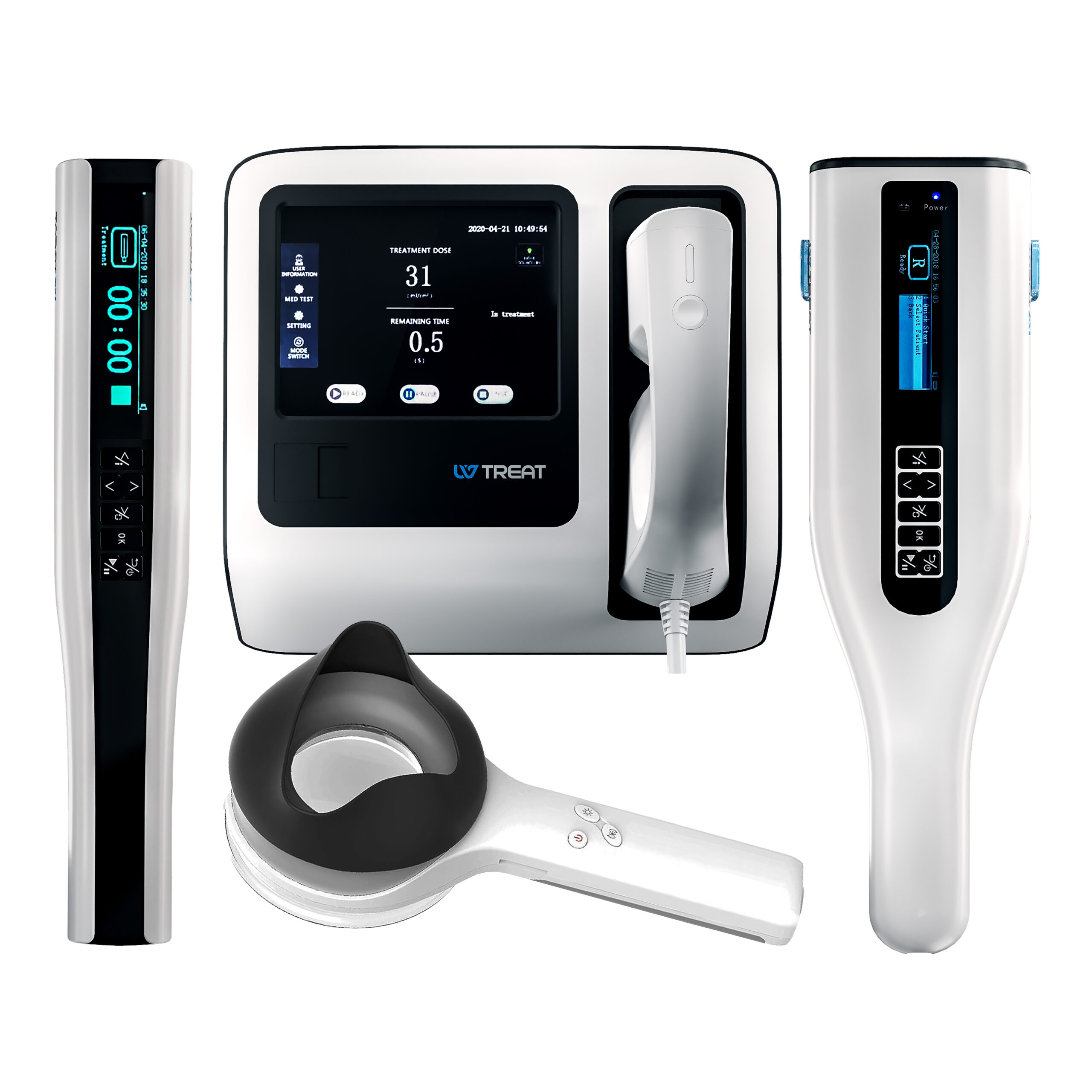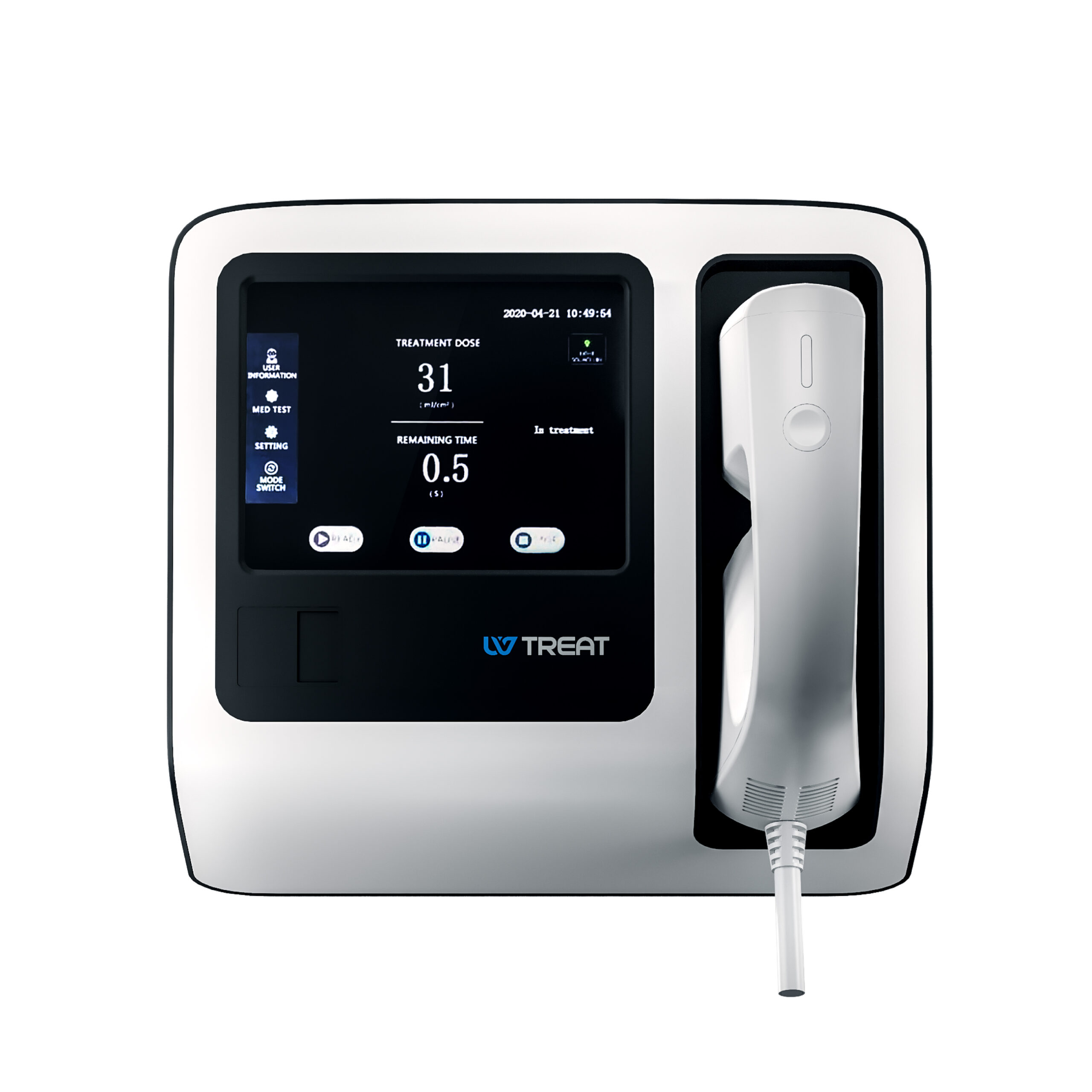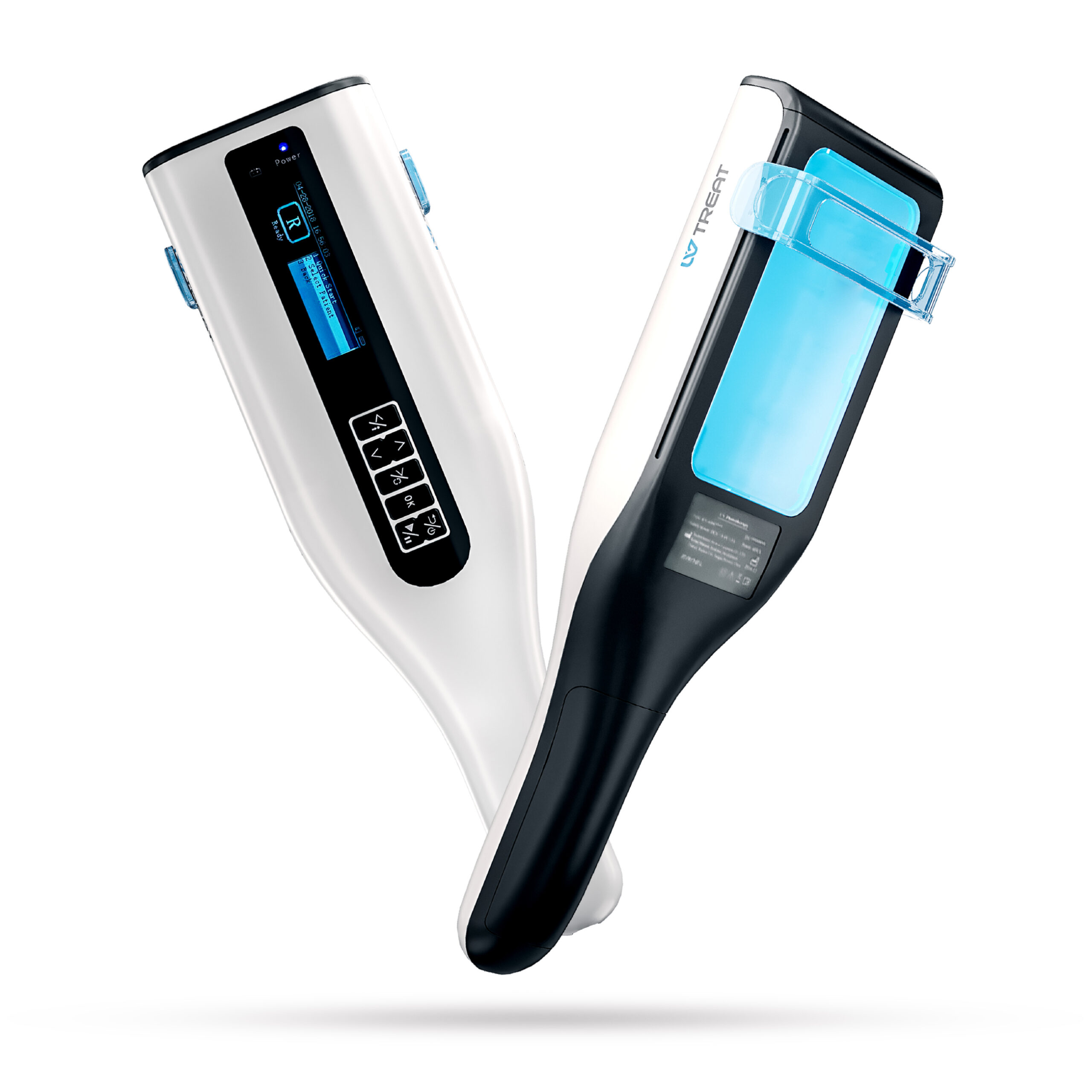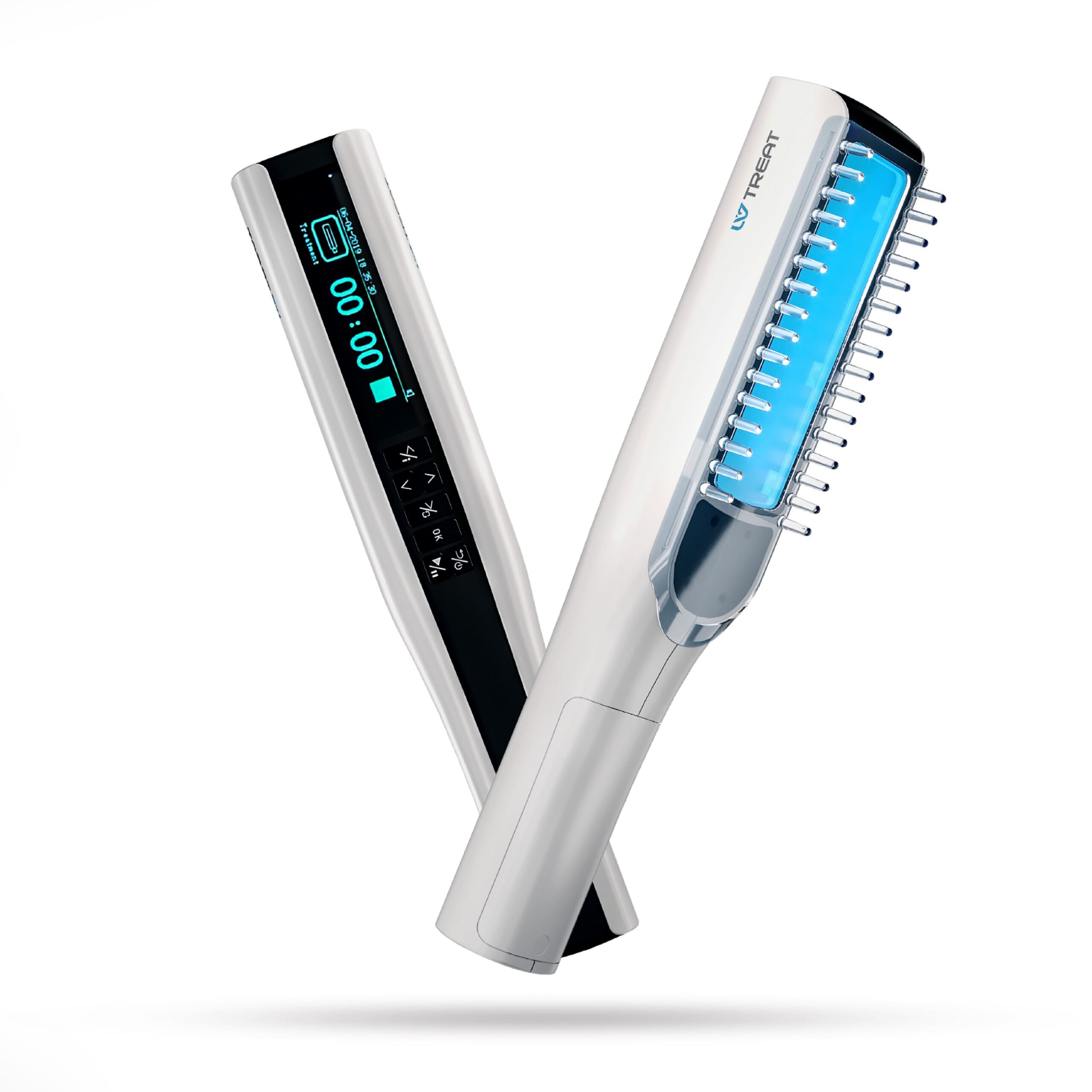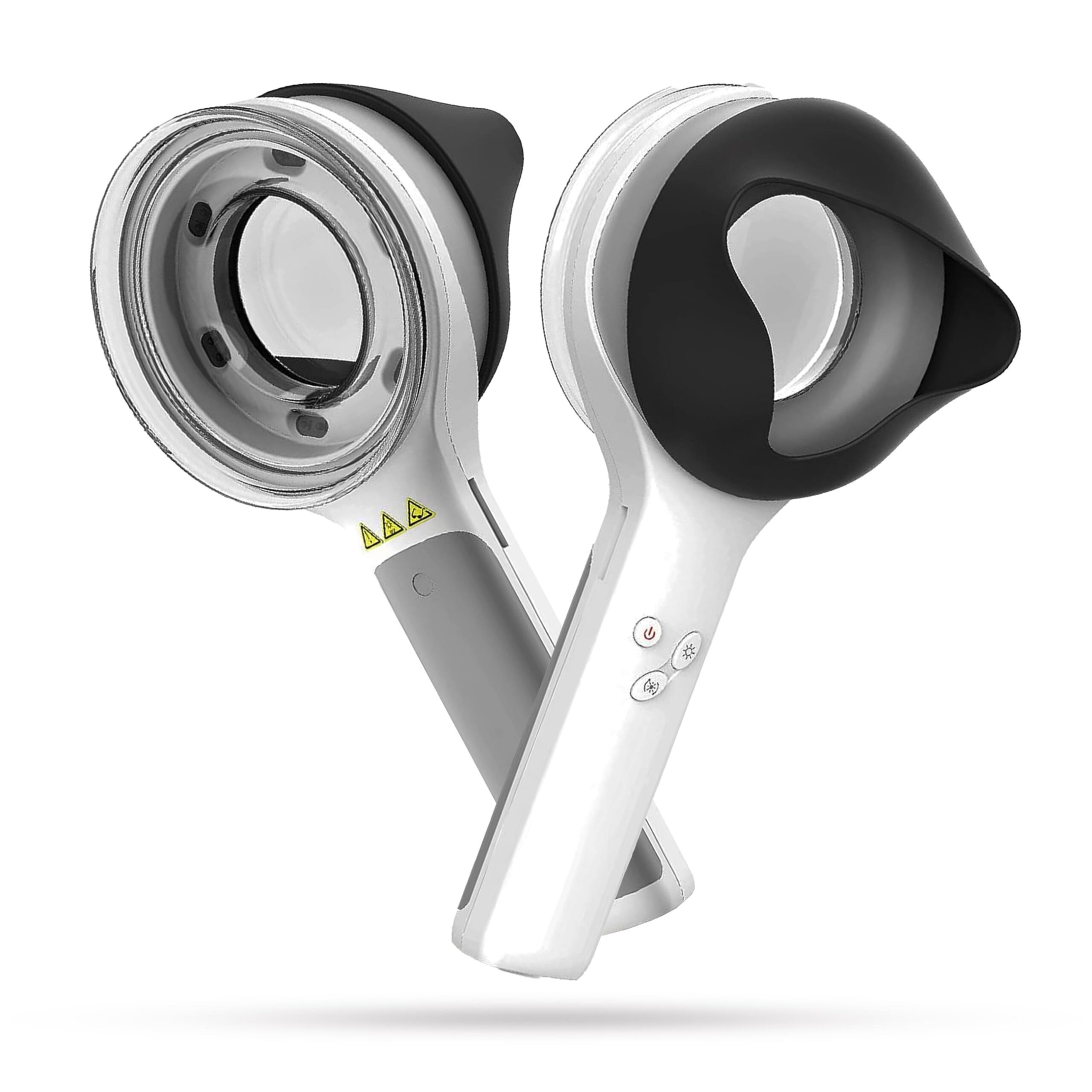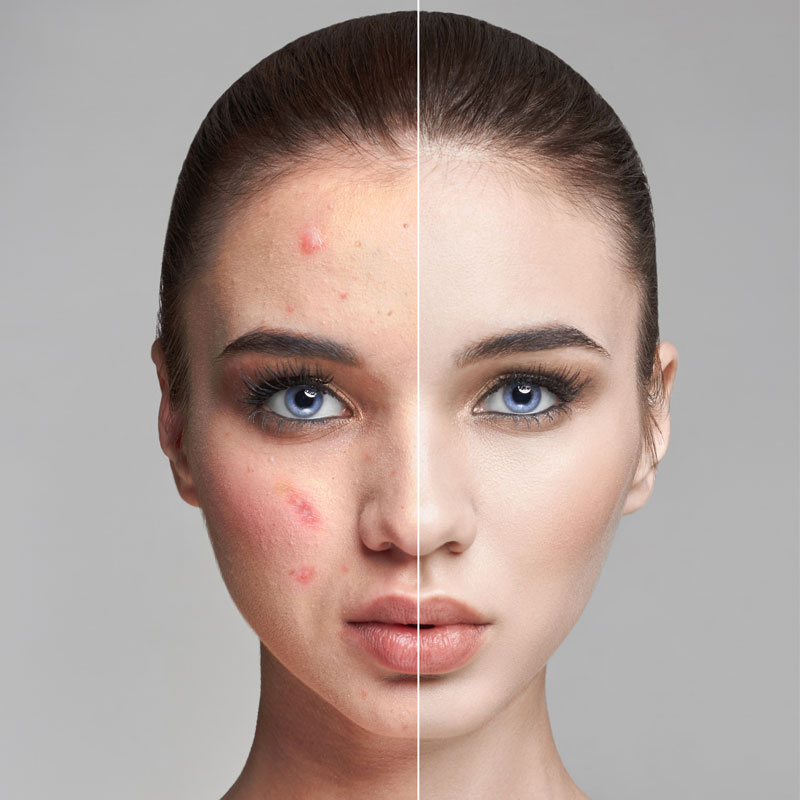Published on January 25, 2024
Key Features of UV Phototherapy for Psoriasis Treatment
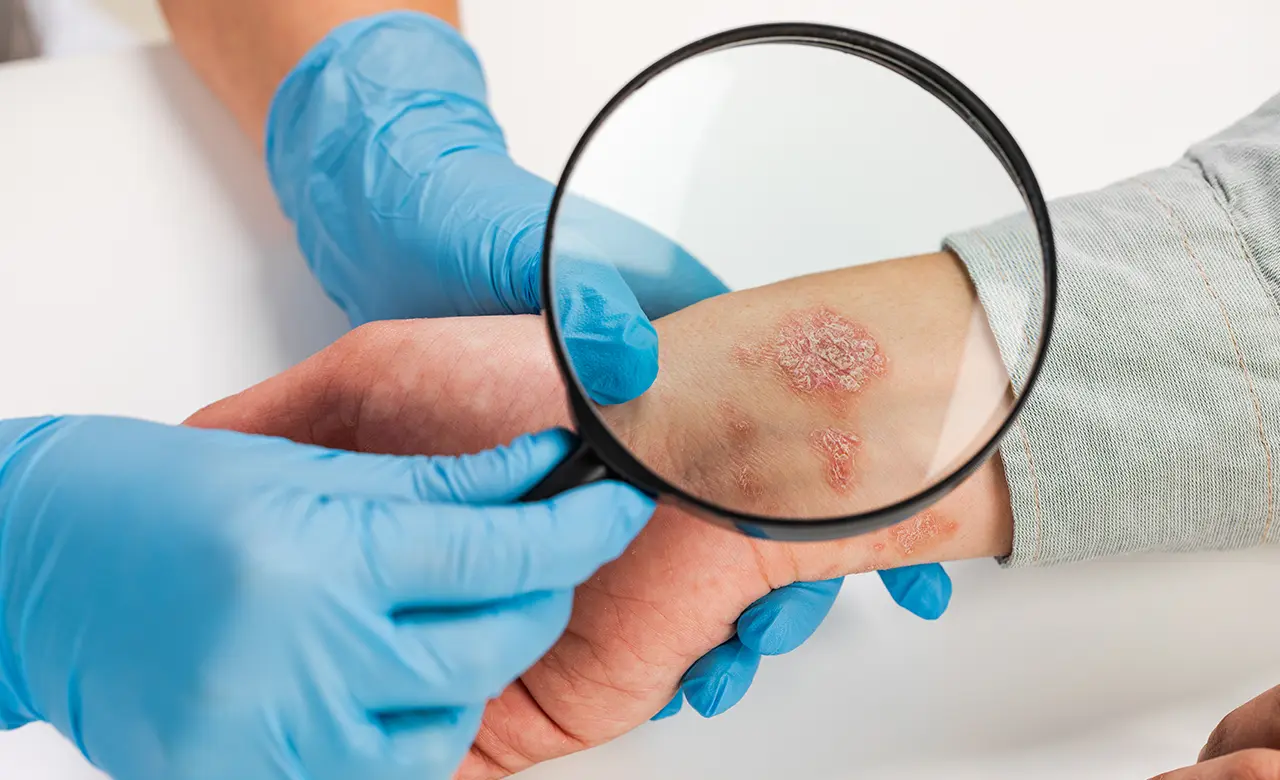
References
Asim, S. A., Ahmed, S., & us-Sehar, N. (2013). Psoralen-ultraviolet A treatment with Psoralen-ultraviolet B therapy in the treatment of psoriasis. Pakistan Journal of Medical Sciences, 29(3), 758–761.
https://www.ncbi.nlm.nih.gov/pmc/articles/PMC3809278/
Zhang, P., & Wu, M. X. (2017). A clinical review of phototherapy for psoriasis. Lasers in Medical Science. Advance online publication. https://www.ncbi.nlm.nih.gov/pmc/articles/PMC5756569/
Li, Y., Cao, Z., Guo, J., Li, Q., Zhu, W., Kuang, Y., & Chen, X. (2022). Assessment of efficacy and safety of UV-based therapy for psoriasis: A network meta-analysis of randomized controlled trials. Annals of Medicine. Advance online publication.
https://www.ncbi.nlm.nih.gov/pmc/articles/PMC8741237/
Farahnik, B. (University of California, San Francisco), Patel, V. (University of California, Irvine), Beroukhim, K. (University of California, Los Angeles), & Zhu, T. H. (2016). Combining biologic and phototherapy treatments for psoriasis: Safety, efficacy, and patient acceptability. Psoriasis Targets and Therapy, 6(1), 105-111.
Smith, J. A., & Jones, M. B. (2020). Effectiveness of UVB Phototherapy in Psoriasis Management. Dermatology Journal, 45(2), 123-130.
Johnson, L. R., & Williams, H. (2019). Comparative Study of UVA and UVB Treatment for Psoriasis. Journal of Phototherapy Research, 12(4), 234-245.
Davis, K., & Taylor, S. (2021). Long-Term Outcomes of UV Phototherapy in Psoriasis. Clinical Dermatology Review, 33(1), 56-62.
Bennett, C. R., & Patel, D. (2018). Combining Topical Treatments with UVB Phototherapy in Psoriasis. Psoriasis Treatment Journal, 17(3), 89-95.
Barros, N. de M., Sbroglio, L. L., Buffara, M. de O., Baka, J. L. C. e Silva, Pessoa, A. de S., & Azulay-Abulafia, L. (2021). Phototherapy. In Continuing Medical Education. [Sciencedirect].
https://www.sciencedirect.com/science/article/pii/S0365059621000805
